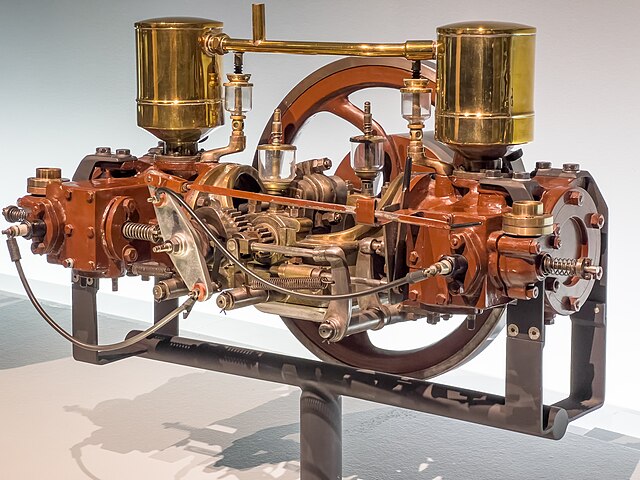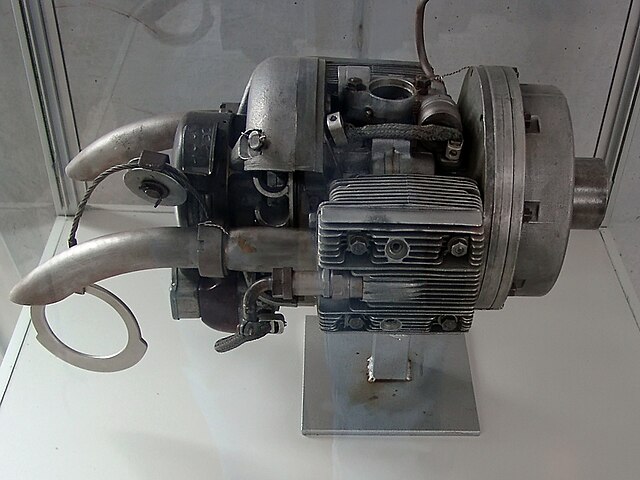An H engine is a piston engine comprising two separate flat engines, most often geared to a common output shaft. The name "H engine" is due to the engine blocks resembling a letter "H" when viewed from the front. The most successful "H" engine in this form was the Napier Dagger and its derivatives. The name was also applied to engines of the same basic layout, but rotated through 90 degrees—most famously the Napier Sabre series. A variation on the "H" theme were the Fairey Prince (H-16) & Fairey P.24 Monarch, where the two engines retained separate drives, driving Contra-rotating propellers through separate concentric shafts. Although successful, they only existed in prototype form.
Napier Sabre H-24 engine (starboard side)
BRM H-16 engine (64-valve version)
Brough Superior H-4 motorcycle engine
A flat engine is a piston engine where the cylinders are located on either side of a central crankshaft. Flat engines are also known as horizontally opposed engines, however this is distinct from the less common opposed-piston engine design, whereby each cylinder has two pistons sharing a central combustion chamber.
Benz Contramotor, the first commercial flat-engine design, ca. 1899
1954 BMW R68 flat-twin boxer engine
World War II-era Riedel starter motor
1969 Hino Motors DS140 boxer-twelve diesel engine







